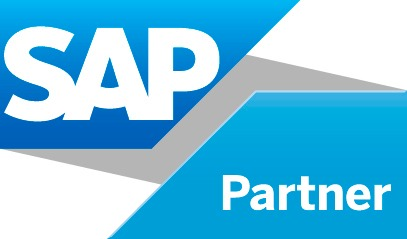10 Mobile Apps Development Patterns in 2021
As per Statista report, the number of users using smartphones across the globe crossed three billion and will further grow by a few millions in the years to come. China, India, and the USA are the nations with the most number of cell phone users. With the widely usage of smartphones, multipurpose mobile apps development patterns have made it fundamental for engineers to remain refreshed and relevant.
Many companies are watching out for the most recent patterns to harvest the greatest bit of leeway and make for a more grounded, increasingly client base. While we saw extraordinary development in mobile apps development patterns till 2019, the year 2020 is set to observe a comparable direction of development, with additionally encouraging patterns. We have recorded 10 significant development patterns among them that organizations and engineers must watch out for in 2020.
Instant Apps
Unlike native mobile apps, you don’t have to download and install applications to run them, they can be used by means of a common connection. These Instant Apps gives you access to restricted features or a major features of the application. One of the prime reasons they are picking up foothold is apps demos.
These applications gives an application’s final form and make it simpler for you to choose if it’s valuable for you before deciding to download. It has improved as a method for connecting with target crowds and persuade them for installation. Another favorable impact these Instant Apps is that they are little in size when contrasted with ordinary applications which diminish the page loading time and bounce rate.
With clients persistently requesting a superior experience and shorter load times, these Instant Apps are something to anticipate in 2020.
AR/VR
Numerous eCommerce stores, real estate agents and clothing brands have synchronized AR/VR improvements in their applications – IKEA, for example. This not just empowered them to lift and improve client experience yet in addition expanded transformation rates. New use cases are in progress as behemoths like Google and Apple are putting intensely in developments utilizing AR. This year, Google intends to present another AR feature for Google Maps, which would furnish individuals with directions from their camera phones continuously.
As per Statista report, the augmented and virtual reality (AR/VR) market can reach upto USD 18.8 Billion in the year 2020. Looking at the development drivers and potential user cases, we can affirm that this year, AR will be one of the noteworthy mobile apps trends that would shape the mobile companies around the world.
Chatbots
At first, applications like Facebook, Skype, and few more companies utilized chatbots everywhere except now, we see the majority of the organizations utilizing chatbots for client communications. With almost half of clients favoring self-administered chatbots over human agents, it has gotten basic for each significant product and service industry business to use a chatbot. Till date, there are around 2.5 million applications in the Google Play Store and about 1.8 million in the Apple App Store. Nonetheless, there are not many applications that have deployed chatbots to upgrade their client experience.
According to Gartner, chatbot interaction is set to increment from only 20% in 2017 to 93% in 2022. With 80% of businesses expected to utilize chatbots by 2020, the integration of chatbots to mobile apps will see rapid increase.
IoT
2019 saw brands like Amazon and Google utilizing IoT and fortifying the challenge by presenting the “Echo” range of gadgets and “Home voice controller” respectively. The organizations like Cisco and Dell in IoT and Google’s transition to get wearable organization Fitbit and its collaboration with Nest, a home surveillance camera producer, further indicates the quick development of these organizations towards IoT innovation.
So far we have seen different usage of IoT, all things considered, for example, Supply Chain Management (SCM) in retail sector, connected homes and clever social insurance monitoring. We are yet to see more and with the expansion for IoT arrangements, the interest for IoT-empowered applications will develop at the same time. Forbes magazine predicts that the IoT market would be increased two-fold by 2021. Application engineers, accordingly, will be hoping to create applications for connected products.
Apps for foldable gadgets
With Samsung thinking of its foldable smartphones, the operating systems are preparing itself to utilize this innovation to improve smartphone experiences. Google, in 2018, formally reported the foldable support on Android phones by utilizing its ‘screen continuity’ API.
As per Samsung, numerous android applications, for example, Amazon prime video, Twitter and Facebook have just been optimized for their Galaxy fold. Video streaming and gaming applications can likewise receive more rewards from foldable technology by just expanding their screen size or utilizing the additional room for extra data and controls.
Since foldable smartphones are the futuristic things of 2020, engineers must arrange their methodology such that their applications are ready to run flawlessly on foldable gadgets.
Beacon Technology
A technology-enabled beacon application on your gadgets shows you where you can have your favored items, their expenses, and different particulars. Beacon uses BLE (Bluetooth Low Energy) signals. At the point when your gadget enters a beacon’s zone, the specific application immediately gets this sign and offers relevant notices and guidelines for the clients. Ventures of industries like healthcare, exhibitions, and hotels have utilized these solutions. After Apple’s iBeacon and Google’s Eddystone, presently beacon is being widely employed iOS and Android application development.
This beacon technology has been around for quite a while, and 2020 will make its quality much more grounded. Beacon based warnings are progressively helping numerous organizations and businesses to interface with their clients in an exceptionally relevant way.
As indicated by GeoMarketing in their report, by 2020, the number of beacon technology installs can reach up to 400 million across the globe, generating USD 56,554 Million by 2026.
5G
The introduction of 5G systems won’t simply fortify network execution but also encourages new opportunities. By giving lower latency and accelerating information-sharing by upto 10 times, you can mechanize more core processes and convey improved applications for holding and sharing information. 5G network services offers a broad scope of opportunities, application engineers should plan the apps that can deal with volumes of information being transmitted without trading off with execution.
It is foreseen that the progress from 4G to 5G wireless systems will be finished before the completion of 2020.
Blockchain
Technology like Blockchain, propelled few years back, turned into a popular expression in 2018, and it was 2019 when we saw its many use cases across different ventures. With information breaks and security turning out to be significant difficulties for business pioneers around the world, blockchain as a pattern is developing quick. A numerous number of fintech organizations have just received the rewards from blockchain application advancement.
As per Transparency Market report, the blockchain market will reach $20 billion by 2024. This obviously demonstrates application designers must prepare to benefit from this innovation.
Low code/ no-code advancement
Organizations hoping to have an in-house application development group now and again do not have the assets to successfully design and build up a versatile product. Low-code or no-code advancement is progressively getting well known among such organizations as it disposes of the requirement for in-house work force to have an intensive information on coding. In the event of no-code improvement, they can build up the product with no coding information by any stretch of the imagination. These stages are easy to employ; where clients can basically drag and drop visual components and compile an app.
While low-code/no-code improvement stages are not here to supplement conventional coding, this pattern will get a lift in 2020, particularly among ventures where spending plans have constraints.
BYOD
Bring Your Own Device (BYOD) is a pattern under which organizations permit their representatives to utilize their own smartphones and tablets for work. Along these lines, businesses spare the expense of tehse gadgets purchase. This accompanies security difficulties, for example, employee frauds and office spying can be turned away by employing a BYOD application. They can introduce the application on their own gadgets which can have various highlights and rights.
As per Insights, BYOD market will reach $367 billion by 2022. Numerous organizations are relied upon to follow the pattern set by big companies and develop applications for their employees.
Conclusion
As the trends change and new advancements rise, it is significant for business pioneers to remain side by side of the most recent patterns and innovations and stand out in the huge mobile apps market space. The advancing mobile apps trends would drive the requirement for big businesses to come up with more advanced mobile apps services.






































































































































































